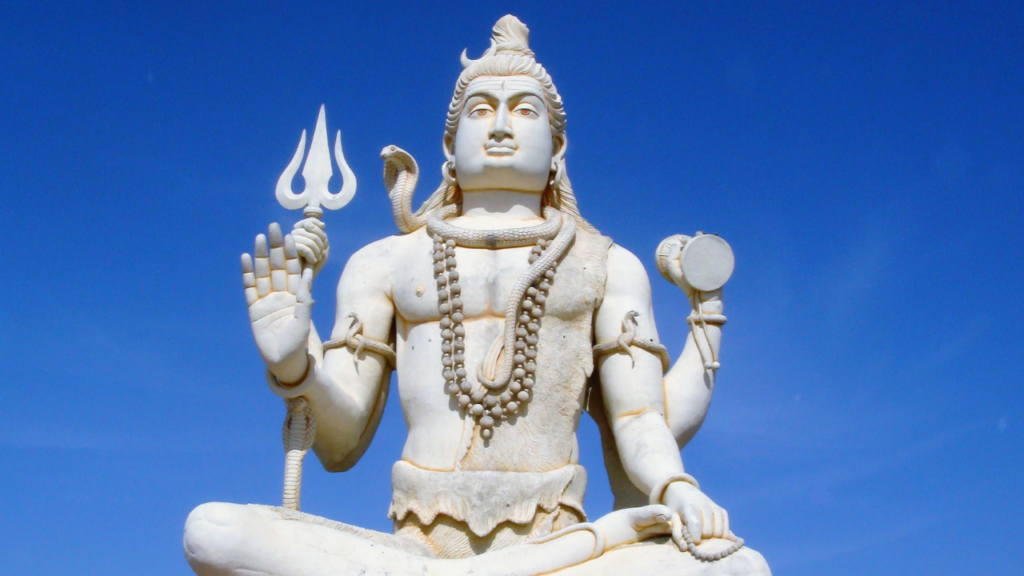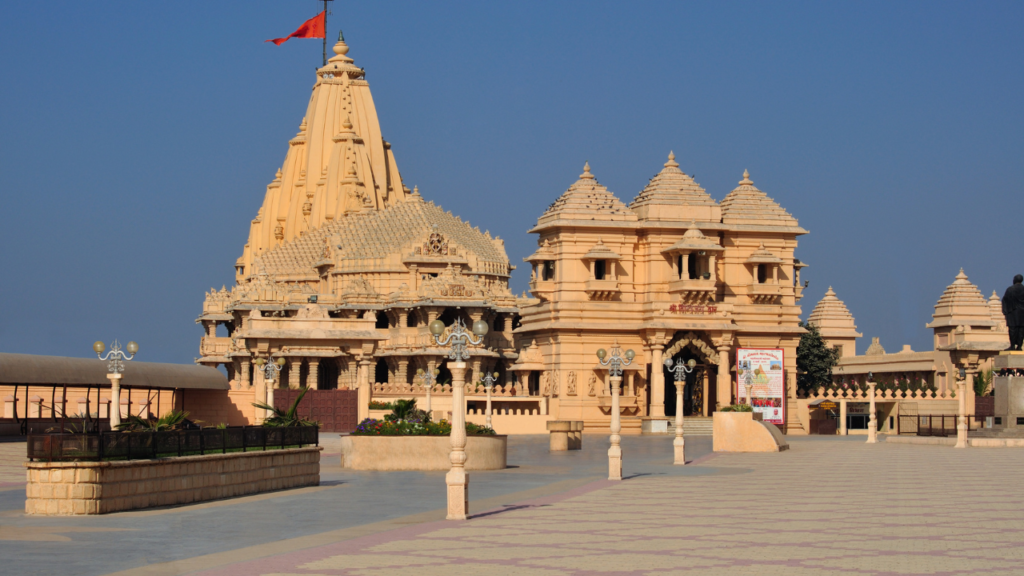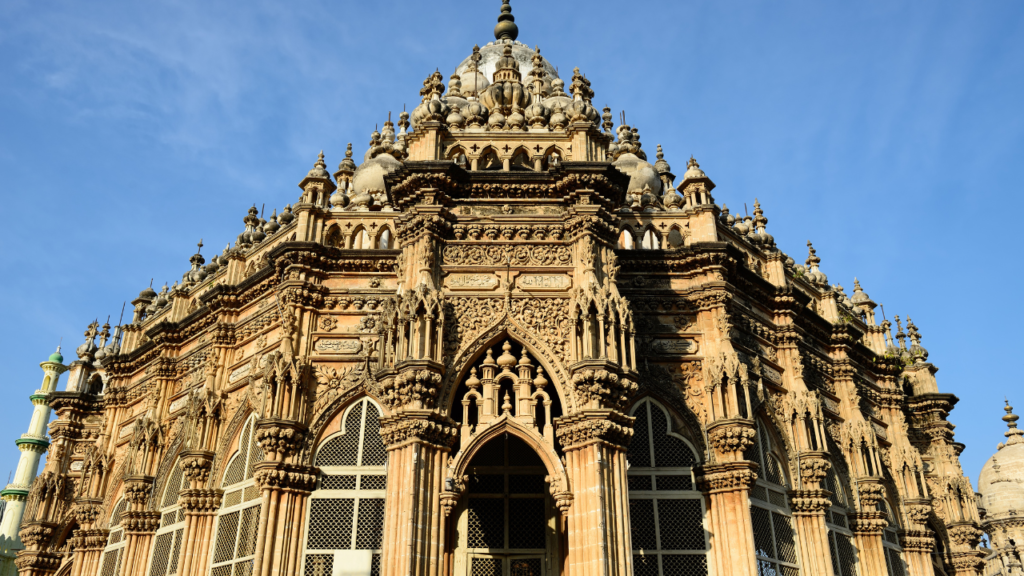Dwarka History, an ancient city on the western shores of India, holds a prominent role in mythology and history. The vibrant city has captured the minds of millions of people over many centuries with its rich culture and mythological stories surrounding the town. In this article, we set off on a voyage to unravel the rich history of Dwarka and shed some light on its origins as a settlement, historical significance, cultural Heritage, tourism potential, and present-day relevance.
Introduction

Dwarka, Also called Dwarkapuri, is a charming city in western Gujarat, India. Its historical significance and sacredness make it popular for history and pilgrimage lovers. In Hindu legend, Dwarka was the capital city of Lord Krishna, the god of love revered by millions of people around the globe.
Early Settlement
The origins of Dwarka are traced back to earlier times, interspersed with mythical stories and archaeological discoveries. According to the Hindu epic Mahabharata, Dwarka was Lord Krishna’s magnificent kingdom, eventually submerged beneath the ocean. Archaeologists have found submerged artefacts and structures off the coastline of the present-day Dwarka, which provide intriguing proof of the existence of Dwarka.
Historical Significance
Dwarka was a thriving city in its Mauryan period and was an essential hub for the shipping trade. Its strategic location facilitated trade relations with ancient civilizations such as Mesopotamia and Egypt. The decline of Dwarka was due to the passage of time due to natural disasters and invasions. In recent times it has come back to life and is a testimony to the glorious past of India.
Cultural Heritage

The rich cultural Heritage of Dwarka is embellished with stunning temples and sacred sites that inspire faith and devotion. In the city, the Dwarkadhish Temple is dedicated to Lord Krishna, which is the town’s central point. This magnificent temple’s exquisite architectural design and intricate carvings draw devotees from across the globe.
In addition to the Dwarkadhish Temple, Dwarka is home to numerous other sacred sites and temples. For instance, the Nageshwar Jyotirlinga Temple, Rukmini Devi Temple, and Gomti Ghat are among the top destinations for pilgrims seeking spiritual arousal. The lively celebrations and festivals in Dwarka, like Janmashtami and Holi, are a great way to enrich the cultural experience of tourists.
The architecture and art of Dwarka are a perfect mixture of various styles and eras. Beautifully designed pillars, intricate doors and vibrant frescoes decorate the structures and temples, allowing one to explore the region’s rich cultural Heritage.
Tourism
Dwarka’s historical and religious significance attracts tourists from all over the world. There are a variety of sites that highlight its rich history. Apart from the temples, tourists can explore Bet Dwarka, a small island in the vicinity that is believed to be Lord Krishna’s primary home.
Dwarka Lighthouse on Dwarka Point offers a stunning panoramic view of the Arabian Sea. The lighthouse is an ode to the maritime Heritage of Dwarka and provides a unique viewpoint for those who visit.
For a relaxing experience, Dwarka offers a range of lodging options, such as guesthouses, hotels, guesthouses and homestays. Local dishes, bursting with flavours and spices, delight guests’ palates with a culinary treat that enhances an overall pleasant experience.
Contemporary Dwarka
While preserving its historical culture, Heritage, Dwarka embraces modern urbanization and growth. The city has seen improvements in infrastructure, such as better connections, new amenities, and better tourist facilities. The city has tried to balance advancement and preservation while ensuring that Dwarka’s history remains unaltered.
Conservation of historical heritages is of paramount significance in Dwarka. Many initiatives and groups are working hard to preserve and repair temples, monuments and archaeological sites to ensure that future generations can learn and appreciate Dwarka’s rich past.
Yet, Dwarka also faces challenges in the preservation of its culture. The development speed and increased tourism can strain that delicate equilibrium between conservation and economic development. AchievingAchieving the ideal balance requires careful planning, sustainable tourism practices, and community involvement.
Conclusion

Dwarka’ss enthralling history, mythical beauty and vibrant culture are a testament to the rich historical past of India. While one walks through the quaint streets, explores the stunning temples, and is absorbed in the spiritual ambience, the significance of Dwarka is evident. This is where the past becomes alive, and the quest for spirituality finds peace.
FAQs
- How do I choose the most suitable time to travel to Dwarka? The best time to visit Dwarka is winter, from November to February, when the weather is mild and perfect for exploring.
- How do I get to Dwarka? Dwarka is easily accessible via rail, air and roads. The closest airport is Jamnagar, about 145 km away. The city is home to the railway station of its taxis, and buses are readily available between and to Dwarka.
- Do you have any lodging options available in Dwarka? Yes, Dwarka provides many accommodations to meet various budgets and preferences. There are guesthouses, hotels, resorts, and homestays for a relaxing stay.
- Which are must-see tourist spots within Dwarka? Some of the top tourist attractions in Dwarka include the Dwarkadhish Temple, Nageshwar Jyotirlinga Temple, Rukmini Devi Temple, Bet Dwarka, Dwarka Lighthouse, and Gomti Ghat.
- Which are the most popular celebrations that take place by the people of Dwarka? Dwarka is famous for its lively celebrations of festivals, such as Janmashtami, Holi, Diwali and Navratri. These celebrations make the city come alive by bringing colours, music, dancing, and a sense of devotion.
Mahakaleshwar Temple Ujjain History
